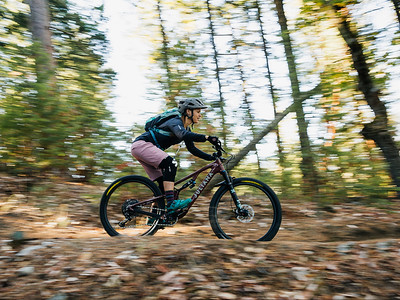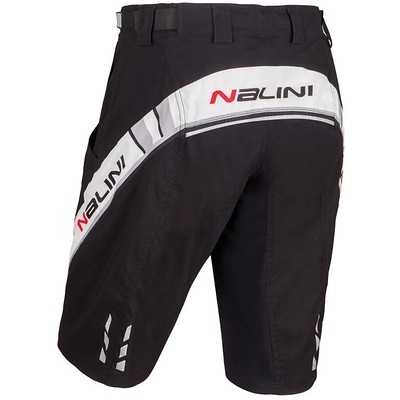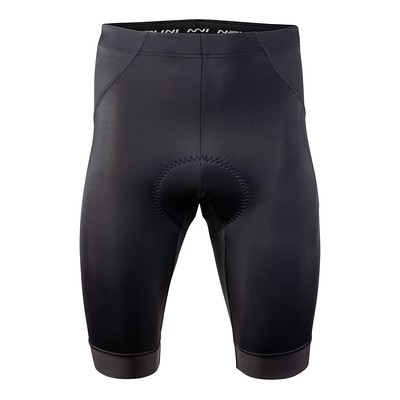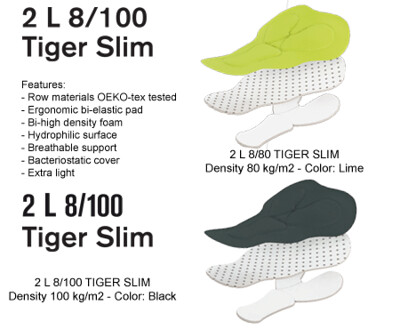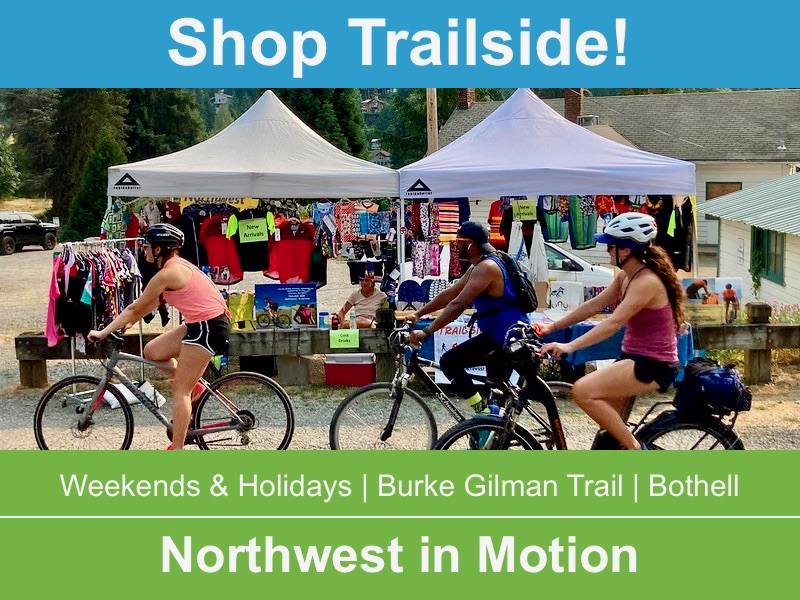In the world of bicycling gear, shorts are often an afterthought. They’re not as exciting as an airy new helmet or adding another gear to your drivetrain. Some riders don’t even wear bike shorts, while others settle for poorly-fitted and uncomfortable options. And that’s a real shame, because whether you ride roads or trails, a well-fitting pair of shorts makes a world of difference.
Our bodies interface with the bike in three locations: the handlebars or grips, the pedals, and the saddle. And that saddle-body interface is the most finicky and personal of them all. The right fit and materials will ensure you stay comfortable and happy all day. Since we think cycling shorts are so important, here are some tips to help you figure out what you should be looking for in your next pair.
Whether you really *need* cycling shorts depends on how much time you spend on your bike. If you spend an hour or two every weekend, it might not matter, at least as far as getting the functional benefits. If you do rides longer than a couple hours, ride more than a couple times a week, or sweat while riding, good-fitting shorts will enhance your experience.
And, if you do specialized events like time trials or Ironman-caliber triathlons, you'll want to be super-picky about your shorts.

Pro triathlete Kayla Kobelin says the “aero” time trial position on the bike puts additional pressure on the front of the crotch, so she looks for a snug fit and better padding in that area.
Since we think cycling shorts are so important, here are some tips to help you figure out what you should look for in your next pair:
Where will you be riding?
The first thing to figure out is what sort of cycling you’ll be doing. Are you planning on riding short mountain bike laps at Duthie Hill, or are you planning on spinning out long road miles around King County and beyond?
In general, road cycling shorts are tight-fitting, and made of Spandex/Lycra with a chamois pad.
Mountain bike shorts, on the other hand, come in two parts: a tight, padded liner short, and a more durable baggy overshort. Gravel riders split the difference. It’s really a personal decision about whether you want to go with full Lycra road shorts (which even many mountain bikers use), or prefer the baggy look of mountain bike shorts.
Each kind of shorts convey their own fashion vibe, and for many of us the look is an essential selection criteria.
The padded chamois liner of mountain bike shorts is often lighter and more breathable than road shorts. They’d be quite revealing as your only layer. That said, it’s not the end of the world at all to just wear your padded road shorts under mountain bike baggies when you’re going for a mountain bike ride. So, if you’re only mountain biking, it’s a good idea to get a pair of nice baggy shorts with a padded liner.
If you’re a road cyclist, get something more substantial that you won’t feel naked in. And if you do a little bit of both and want to save some money, get some well-fitted road shorts or bibs, and just wear baggy mountain bike shorts over them when you ride trails.
Bibs vs. Shorts
There are two main styles of padded bike shorts: bibs, and regular shorts. Bib shorts have elastic suspenders that go up over your shoulders, and a higher waist and back. These features help keep bib shorts snug around the crotch area. They’re very secure and supportive, and help your clothing feel locked in. The downside is that they’re a little warmer, and you usually have to completely disrobe to use the bathroom. Regular bike shorts breathe a little better, and allow you to answer nature’s call more promptly, but they do have a tendency to sag down a little during longer rides.
If you can’t decide whether you’d benefit from wearing bibs, here are some general guidelines:
For road cyclists, bibs are almost always the best choice. On long road rides shorts without straps can creep down, giving you some “plumber’s butt” and because the fit is looser, the chamois is more likely to rub and chafe. Most road riders will appreciate bibs.
"A huge pro about shorts is that on long rides, going to the bathroom doesn't mean you need to completely undress! If you have a proper fit, you shouldn't feel much of a difference between bibs and shorts. Bibs can be useful in cooler weather, giving you extra material around your waist and back."
--Kayla Kobelin
For mountain bikers, plumber’s butt isn’t as big of an issue thanks to longer jerseys, and you spend less time in the saddle, so there’s less chafing. Most mountain bikers will be fine without bibs. That said, bigger riders may appreciate the support bibs give, and some options have pockets that allow you to carry a water bottle and snacks in the back of the bibs.
At the end of the day, there’s no definite wrong answer to the bibs vs. shorts question, it all comes down to personal preference and comfort.
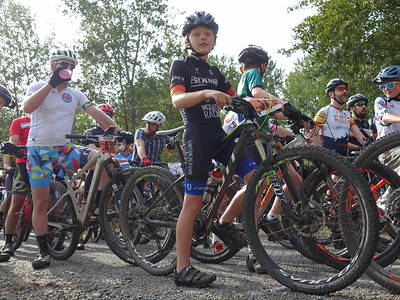
A young competitor at the start of the Northwest MTB Race Series.
Bend, OR-based Lauren Baker, who started as a roadie but is now mostly a mountain biker has this advice:
"Bib shorts seem like one step harder to get a good fit, so I've never tried them. I look for comfort and coverage. Because cycling shorts are fitted, I think they look better in longer lengths. Shorter lengths are cooler and more comfortable, but most women, even athletes, start having cellulite at a certain age...not something you want to highlight."
Fit
"The biggest mistake people make when trying on bike shorts is buying the pair that fits best while standing in the fitting room. How often do you find yourself just standing up straight on your bike? Instead, try to get into an aggressive riding position when you try on shorts. Liner shorts should be snug without being painfully tight, even when your muscles are tensed. Make sure the cuffs stay down and don’t ride up your thighs. Make some pedaling motions with your legs to test them out. Are the bib straps too short? Are they pulling the liner up into a wedgie? How does the waistline feel when you’re bent over with your core engaged?
When trying on shorts, they should feel snug! Think of it as almost uncomfortably snug. After you start using them the material will slightly stretch out. Also, if the shorts feel uncomfortable when standing upright, it is because shorts are made for sitting in the saddle at an angled position. When trying on shorts, make sure you test to see how different shorts feel when sitting on the bike."
--Kayla Kobelin
Bike shorts are designed to make your time on the bike more comfortable, it doesn’t matter how good they feel when worn casually, the real fit test comes when you’re in a real riding position.
A key principle to keep in mind about fit is:
movement = friction
friction = abrasions and blisters
Therefore, especially in the crotch area, you want things to be pretty snug.
Other Features
Materials
Sometimes the list of materials and features on the tag of bike shorts can sound like some sort of space age recipe. But really, what you’re looking for is pretty simple. You want a short with a decent percentage of Lycra, and you want to make sure that the cuffs have some sort of rubber gripper to help them stay down on long rides. The materials your shorts are made out of will also affect things like how soft they are, how breathable they are, and whether they’re waterproof. Denser-feeling fabrics tend to stretch out less and last longer.
Waterproofing
If you’re looking to keep your riding going through the wet PNW winter, it’s a good idea to look into waterproof bike shorts. Shorts with waterproofing will probably not breathe as well, so they might not be great in the heat of the summer, but they’re a lifesaver in the winter.
Length
Some bike shorts come in a longer knicker-style version, or even a full pant cut. That can be really helpful on colder and wetter days, but if you’re only going to own one pair of bike shorts, get a traditional above the knee cut, it’s easy to just throw tights over them for cold rides.
Short and Liner Combos
If you’re buying mountain bike liner shorts, some brands will advertise that their liners can button into their shell shorts, creating a cohesive unit. In practice though, this feature is generally a pain to use, and makes it harder to use the bathroom during a ride. And it’s just fine to mix and match brands between your liners and shells.
Bib Pockets/Storage
If you’re getting bib shorts, decide whether you want pockets. Bib storage makes it easy to securely carry extra snacks and water, but also comes at a price premium.
Chamois Pads
Chamois pads are the pads in the crotch and butt area of the shorts. They are generally rated by the length of rides in hours. Chamois cost is based on the density of the foam, and types of materials. Chamois thickness is a very personal decision that eventually comes through experience. Although most shorts manufacturers recommend thicker chamois for longer rides, a thick chamois will become saturated with sweat on a long summer ride, and eventually feel like a diaper, which can result in excess friction down there. Opting for a smaller chamois reduces this problem.
A lot of riders try to solve butt pains with a thick chamois, but more often than not the real problem is with the fit of the saddle (which should be firm), and the overall bike fit. Check out our recommendations about bike fits here and here.
If you are newer to cycling, or ride infrequently, you may experience butt pain after rides longer than an hour or so. Your body will adapt to whatever you do with it, and if cycling becomes part of your fitness routine (and you have a properly fitted saddle and bike) the butt pains will pass.
Caring for your Shorts
Good cycling shorts can be quite an investment. Therefore, we recommend that you take good care of them and all of your technical wear. Wash or rinse them immediately after your ride.
Pro tip: rinse them during your post-ride shower, then line dry them out of the sun. Check out our detailed guidance about How to Wash Your Kit.
"Always get out of your shorts as soon as possible when you're done riding! They may look and feel clean, but believe me, they are not! Shorts are covered from your sweat and bacteria from your previous ride and putting them back on can increase the risk of infections and chafing or uncomfortable saddle sores! So as annoying as it may be to be constantly washing your shorts, your body will thank you!"
--Kayla Kobelin
Thanks to Evo Seattle for collaborating on this story.
